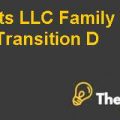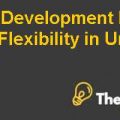INTRODUCTION OF COMPANY
Marriot Corporation began its operation in the industry of hotels, restaurants, theme parks, cruise ships, lodging and contract food services. The company had enjoyed excellent growth and expansion since its inception in 1927 by J. Williard Marriott. The company has expanded its operations and it owned about 476 company-operated restaurants, 23,000 rooms, 66,000 employees and it was in 1979 that its sales revenue had exceeded around $1.5 billion.
The profits of the company had also increased rapidly over the years and its profits usually doubled every 3 to 4 years of its operations.
The problems currently being faced by the company were that it had the excessive unused debt capacity and a lot of cash was being held by the company, although the company had a good record of reinvesting its excessive cash flows at high returns. Therefore, in order to use the debt capacity of the company, the company has considered repurchasing around 10 million shares at $23.4 per share, with a premium of $4 included in this price over the current share price of the company. In this way, the management and the CEO of Marriott thinks to optimize its debt to capital ratio, reduce its cost of capital and increase the share price of the company.
Q1. What is the goal of the repurchase program?
The goal of the repurchase program was clear. The management of the company wanted to repurchase around 32 million shares at a price of around $ 23.5 per share. First of all the companies had excessive unused debt capacity. Since, debt is cheaper as compared to equity, therefore, the company wanted to utilize its debt capacity by borrowing debt. The company had made a plan to borrow a debt of around $ 235 million. The proceeds of the debt issue would then be used to repurchase the shares which would also reduce the equity by value of $ 235 million. This would improve the earning per share of the company too. Another, motive behind the repurchase program was also to increase the management and family control from 20% to 29% over the outstanding shares of the corporation. The main reason behind this program was to improve the share value of the corporation and reduce the cost of capital of the company by utilizing the unused debt capacity.
Q2. Wilson is correct in his disliking of low debt ratios?
Yes, Wilson was absolutely correct for disliking low debt ratios for his company. Debt is cheaper as compared to the cost of equity. The theory of Modigliani and Miller has also shown that inclusion of debt in the capital structure of the company will reduce its cost of capital. This is because interest is paid on the debt, which is tax deductible; therefore, the tax shield reduces the capital cost of the company. When a company issues debt, it is obliged to pay fixed interest payments since the maturity of the debt. Therefore, the company has to make sure that it has enough cash flows in each period to maintain a good interest coverage ratio. Given the benefits of the debt issue, Wilson is correct in his disliking of low debt ratios for Marriott Corporation.
Q3. Is the potential repurchasing consistent with the financial goal set out by the corporation?
In case of Marriott, the company has the excessive debt capacity and excessive cash, therefore, increasing debt levels would reduce the capital cost of the company. If we refer to the calculations performed in Appendix 1, it is evident that before the share repurchase if we assume that the company was all equity financed, then its WACC (cost of equity in this case) is 18.65%. However, after the repurchase of shares it is reduced to 7.76%. This would enhance the shareholder value and increase the company’s share price. This is the financial goal of the company. It wants to create shareholder wealth and it wants to increase its share price which, according to the management is undervalued currently.
Q.4 Should the insurance companies re-negotiate their covenants?
If the company goes forward to repurchase the shares with the proceeds of the debt issue, this would change the debt to capital ratio of the company. This would increase the risk being faced by the company, because as the debt level will increase, the shareholders will be more concerned about their returns and they would demand much higher returns. Also, the debt holders would be concerned that whether the company has enough cash to meet their commitments on time and pay interest payments regularly. Therefore, this repurchasing program will necessitate the renegotiation of the current debt covenants and the insurance companies would propose more restrictive debt..............
This is just a sample partial case solution. Please place the order on the website to order your own originally done case solution.
This case describes a sequence of re-evaluation of debt management capacity of Marriott and the decision to invest these unused debt. Video of the # 5556, "Leadership", is designed for use with this case (see video bibliography). "Hide
by Diana Harrington Source: Darden School of Business 25 pages. Publication Date: March 28, 1991. Prod. #: UV2070-PDF-ENG














